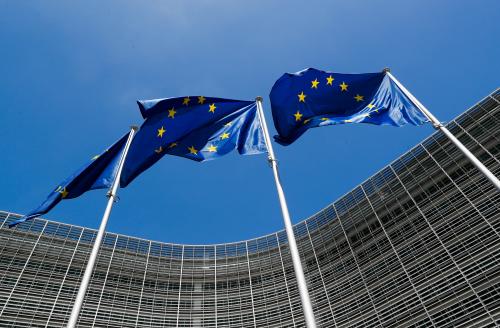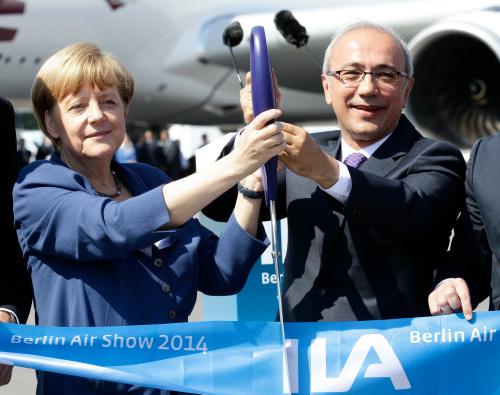This is the first piece in a two-part blog series on Poland’s economy. The second post examines social changes challenging citizens’ resilience following the country’s rapid economic ascent.
World Bank staff spend their careers traveling from country to country. Most of these countries struggle to implement good policies and only a few succeed in reaching high-income status and sustaining growth. Take Turkey, which was growing towards high-income status but then experienced a slowdown; or Argentina, which reached high-income status but fell again to middle-income status riddled with policy uncertainty; or Romania, which has been unable to make the most of its EU membership and is suffering from governance issues. So when we came across Poland, which moved from middle to high income in less than 15 years, we wanted to take a closer look.
Over the last two decades, Poland experienced the most stable high growth in the EU, increasing the size of its economy by two and a half times and raising incomes. In 1994, the Poles had one-fourth less income than the Mexicans did. By 2014, the incomes of Mexicans had grown annually at about 0.9 percent (to $16,300); whereas Poles saw their incomes grow annually at 4.2 percent (to $25,000). In only 20 years, a Pole had become 50 percent richer than a Mexican.
Even more remarkable, this economic growth spurt was inclusive: jobs and wages increased, inequality across income groups and regions remained low, and poverty declined (see Figure 1 and Figure 2). Poland’s rapid ascent earned it the nickname “European Tiger,” in reference to similarly rapid ascents of the Asian Tiger economies.
So what lay behind Poland’s success? What was the formula? What can others learn from it? We tried to answer these questions in the report “Lessons from Poland, Insights for Poland: A Sustainable and Inclusive Transition to High-Income Status.”
Just good luck?
Poland and a handful of other economies that sustained high growth and graduated to high income focused on five key policy areas (see Figure 3):
Figure 3. The five key policy areas

1. Governing
It is important to get the institutions right—economic but also political—and guide reform with a shared vision. What sets Poland apart from the Asian Tigers is that it sustained its high growth with a vibrant democracy—one that supported a shared vision of a socially responsible market economy. Such a vision facilitated remarkable policy continuity spanning 17 governments since democratization. Reforms were sequenced effectively. Rapid liberalization was quickly followed by the creation of a support structure of basic democratic institutions at the local and national level. This support structure, together with the use of EU accession as an anchor, helped create a political consensus for deeper economic institutional change. And the inclusive political institutions at all levels of government also made the Poles pay their taxes, something other transition economies often struggle with but is a key pillar of sustainable public finances.
2. Sustaining
Ensuring macroeconomic stability is key to keep inflation and debt under control. Poland did this through a rules-based but flexible fiscal framework that limited deficits and debt, and a flexible exchange rate backed up by a credible inflation-targeting monetary policy. Poland’s effective restructuring, regulating, and supervising of the financial sector also ensured that banking crises were avoided.
3. Connecting
Integrating domestic markets into global markets helps increase firm competitiveness. Poland did this through rapid, but sequenced, integration: cutting tariffs first to help markets “get the prices right,” then tackling the more complex soft infrastructure in advance of EU accession, and finally making the most of EU hard infrastructure funds to connect domestic and external markets. Poland welcomed foreign direct investment enabling its domestic firms to participate in global value chains and exposed them to the global markets, which provided access to quality inputs, capital goods, and technological transfers.
4. Growing
Making a good use of the market helps reallocate resources as the country grows. Poland balanced factor accumulation—“perspiration”—and productivity improvement—“inspiration”—by allowing market forces to reallocate resources between sectors (structural transformation), within sectors (enabling the efficient firms to grow and the inefficient to shrink) and within firms (adopting better management and new technology): the increasing competition continuously strengthened the incentives for firms to improve, innovate and focus on comparative advantage. Poland not only facilitated markets’ reallocation of resources, it also helped expand them with focused reforms and investments in human capital, which resulted in large gains in educational performance.
5. Including
Providing opportunities for all promotes shared prosperity. Poland ensured broad-based access to quality education across income groups and regions. It increased business opportunities, but also earnings. Poland’s competitive and open markets provided business opportunities for firms and jobs for workers, but this was also complemented with regular raises in the minimum wage.
As was also the case in the handful of other economies that sustained high growth and graduated to high income, the rapid economic ascent has generated new challenges that require the continued attention of policymakers. This is covered in the report and in part two of this blog series.









Commentary
How to avoid the middle-income trap: Lessons from Poland, a European Tiger
December 17, 2018